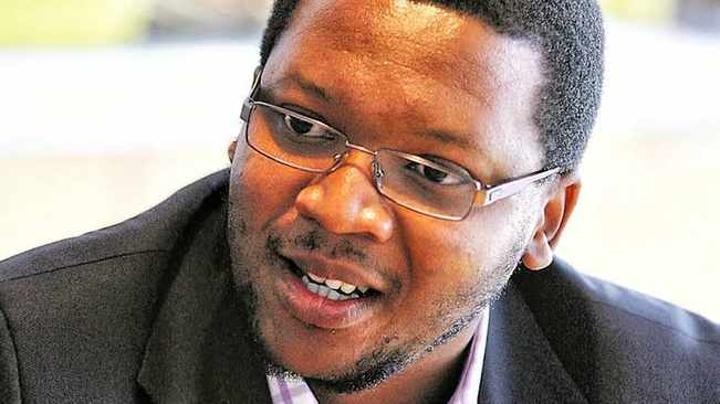Africa-Press – South-Africa. By Christopher Malikane
THE MOST RECENT Quarterly Labour Force Survey reports that the official unemployment rate continues to trend upwards. Between the third and the fourth quarters of 2020, the unemployment rate increased from 30.8 percent to 32.5 percent.
The Minister of Finance, Tito Mboweni, on the other hand, says that he is “hopeful”, partly because the economy will now grow by 1.9 percent over the coming years, as opposed to the 0.9 percent he projected previously.
But, as we have repeatedly mentioned in previous discussions about the Budget, for the unemployment rate to be stabilised, the growth rate has to be at least 3.5 percent. The Budget does not respond to this situation. The simple question to ask National Treasury is: where will growth come from?
A key element in the Budget in the fiscal framework is the debt-to-gross domestic product (GDP) ratio, which is projected to increase up to 88.9 percent.
Two factors drive the debt-GDP ratio: the primary deficit, which is the non-interest expenditure as a ratio of GDP and the growth adjusted interest cost of public debt. Non-interest expenditure is a component of aggregate demand in the economy. One of the most direct ways that government can contribute towards the economic recovery, is to increase this component of expenditure faster than GDP – otherwise the government would be tailing behind the private sector.
In examining the numbers presented in the Budget, we observe that expenditure will decline from 41.7 to 34.9 percent of GDP. The non-interest expenditure, which excludes the public sector wage bill, is projected to decline from 19 to 15.7 percent of GDP. This means that the government will be pursuing a contractionary fiscal policy while at the same time it seeks an economic recovery.
The growth rate of the economy will be held back by a lower-than average growth in its spending. This is the evidence of austerity that the minister has missed. To him, austerity means shutting down hospitals, children not going to school, shutting down universities, etc. That is not how serious macro-economists measure austerity.
In the context where there is weak aggregate demand, private investment is not going to be stimulated. Already the manufacturing sector is utilising 72.1 percent of its capacity, to expect more investment in this situation is unrealistic.
It is hard for entrepreneurs to have confidence to invest, investment conferences notwithstanding, while sitting with unused equipment. Add to this the prohibitively high cost of credit (government bond yield is hovering around 9 percent), which means that interest charged on loans to the private sector will be higher.
Worse, the government has not yet figured out the most efficient and effective way to bring cheap credit to entrepreneurs in this country; many do not have sufficient collateral and so are rationed out of credit markets.
Evidence of this is the extent to which the loan guarantee scheme of R200 billion was meant to assist entrepreneurs, but less than R20bn was used, precisely because many entrepreneurs simply do not have collateral.
The Budget projects that private consumption will grow by about 2.5 percent, more than the projected 1.9 percent growth in GDP.
From a macroeconomic point of view, this means that aggregate consumption will be the main driver of economic growth, not government and not private investment. If aggregate consumption is then projected to grow faster than aggregate income, then private households should be expected to get more into debt to finance this consumption expenditure.
The basis of the growth projections is not sustainable; household debt to disposable income is slowly creeping upwards. It is now almost 75 percent.
With job losses all around, spurred by shut-down and the rising unemployment rate, working people are facing increasing difficulties to sustain current consumption expenditures.
The Budget seeks households to enter deeper into debt. The Budget also projects a deficit on the trade balance: imports will exceed exports, so there is no source of growth there.
Where should growth come from? Ordinarily, under conditions of excess capacity and a shortage of aggregate demand, government steps in by increasing spending at a rate that is more than GDP – to pull the economy out of low growth.
This is done through a judicious combination of fiscal and monetary policy. With the inflation-gauge close to the lower boundary of the inflation-targeting band, scope exists for an expansionary fiscal policy.
This is besides the fact that the inflation-targeting framework needs to be reviewed. Unconventional ways to fund the fiscal expansion are used – such as 0 percent interest loans to development finance institutions to bring credit to entrepreneurs with weak collateral, quantitative easing and direct lending to lower bond yields, and to facilitate a cheaper financing of government, refinance state-owned enterprise debt (Eskom, Transnet, Prasa, etc) to improve the supply-side while providing demand to related value-chains.
Alas, such type of thinking is outside the Treasury straight-jacket.
Christopher Malikane is Associate Professor of Economics in the School of Economics and Finance, University of the Witwatersrand (he writes in his own capacity)
*The views expressed here are not necessarily those of IOL or of title sites
BUSINESS REPORT






